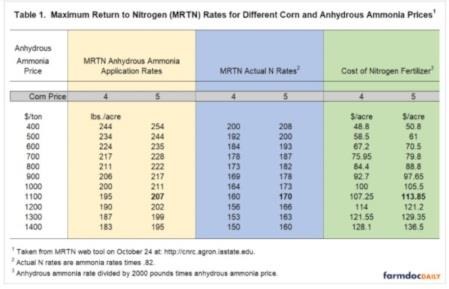You may have heard the term “carbon sequestration.” In its basic terms, it refers to keeping and returning carbon to the soil. Since carbon is an element, how and why should this be done?
One main reason is that carbon dioxide is a greenhouse gas, and increasing amounts contribute to climate change. Agricultural practices can store carbon in the soil, and now carbon markets are creating incentives for farmers to consider changing some of their field management techniques to do so.

Carbon markets were the leading topic for the 2021 Sustainable Agronomy Conference, which is also available for streaming.
Carbon storage in soil has both environmental and economic benefits. Plants pull carbon dioxide from the air, and metabolize it into roots, shoots, leaves, and fruits or vegetables. When plants metabolize carbon dioxide into sugars and other building blocks, they become “organic matter.”
By pulling carbon dioxide out of the air, plants reduce the amount of this greenhouse gas in the atmosphere. While living, plants send out organic matter into the soil, where is it stored. If a plant is grown for crop production, the way farmers manage tillage, harvest, and crop residue can have a great impact on the amount of carbon stored in the soil.
It may not be possible for all farmers to reduce tillage, or to grow crops that create more organic matter. But they can implement new practices that will change their impact on carbon use and storage. That’s where carbon markets come in.

The concept is simple. Farmers who implement new practices can enter carbon market programs. By providing proof of their practices (that’s the hard part), they can earn carbon credits.
Then, other companies, such as a manufacturer, can buy these credits to offset their carbon imprint. It’s a new source of potential revenue for farmers.
Jamie Ridgely was one of the presenters at the Being Informed, Realistic, and Data-driven with Carbon Markets session that ran on July 20th. Ridgely, who works at Truterra, LLC, is at the forefront of managing carbon markets.
“The real work we are doing is about creating sustainable change in production agriculture to more regenerative systems,” says Ridgeley. “The carbon market provides an additional incentive.”
At the forefront of this effort will be Certified Crop Advisers and agronomists. They will be consulting with growers on what they need to do to participate in this potential revenue source.
“Agronomists, crop advisers, and forward-thinking farmers are the key, not the hype about the markets,” says Ridgely. Advisers need to look at how farmers can transition into the new system in a realistic way that enhances their productivity. “We are looking at going from very low levels of adaptation to very high levels. And we need to make the scaling of this system sustainable and beneficial for the grower.”
A current hurdle to getting more farmers into the carbon markets is the lack of information they can trust. Again, crop advisers will be crucial to the success of these programs.
Although the short-term profits of entering the carbon market may be small, Ridgely says there is another message for the farmer. “Managing for soil health and moving to more regenerative practices leads to better productivity too.” In addition, the value of the carbon credits will grow over time.
Not only do farmers need to implement new practices, but they also need to collect and validate a lot more data to enter the carbon marketplace. Regrow is an agri-food tech company whose mission is to “unlock potential of regenerative ag by enabling appropriate value of ecosystems,” says William Salas, Chief Strategy Officer.
Click here to see more...